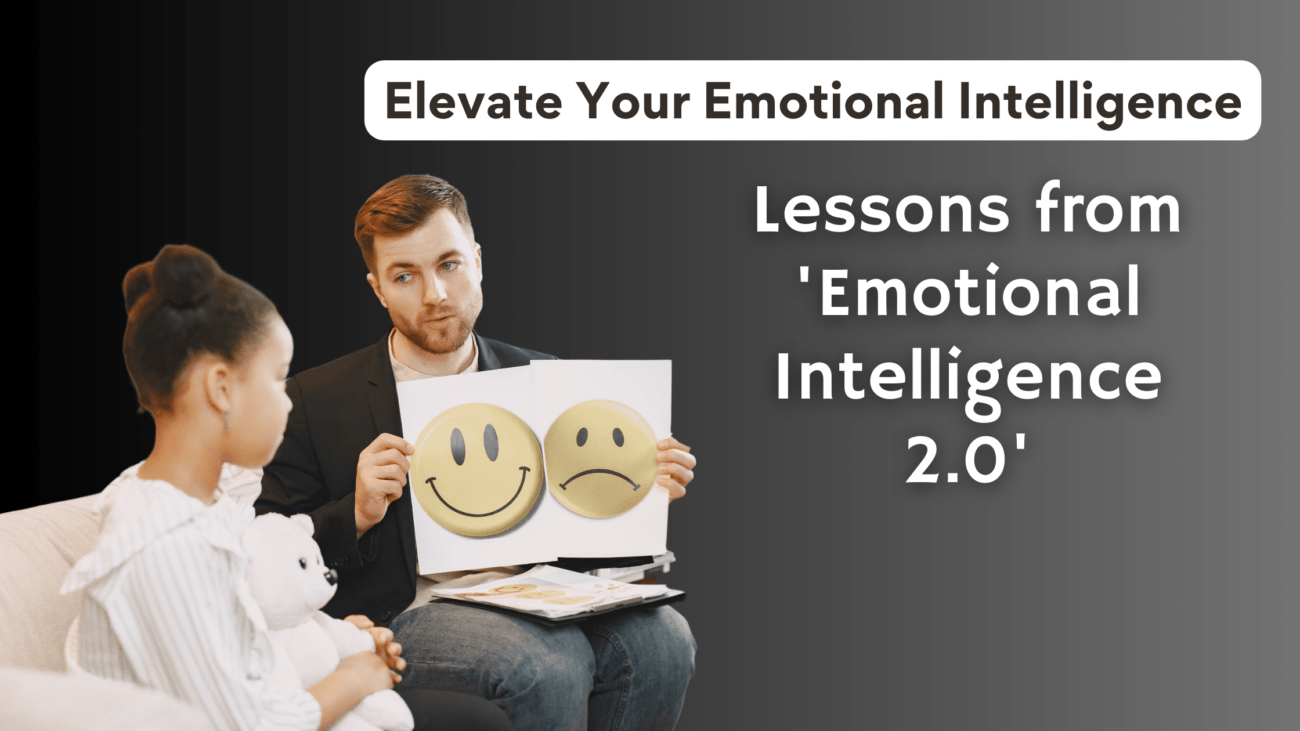Barbara Fredrickson’s book, “Positivity,” explores the science of positive emotions and their impact on well-being. Here are the key concepts from the book that illuminate the field of positive psychology:
1. The Broaden-and-Build Theory
Fredrickson presents the “broaden-and-build theory,” which suggests that positive emotions expand our mindset and thinking, allowing us to build personal resources over time. This fosters overall well-being and resilience.
2. The Positivity Ratio
The book introduces the “positivity ratio,” which emphasizes that to flourish, individuals should have a higher ratio of positive to negative emotions and experiences in their lives.
3. The Power of Micro-Moments
“Positivity” highlights the importance of micro-moments—brief, everyday positive experiences that accumulate and contribute to overall well-being. These moments can be as simple as sharing a smile or feeling a connection with someone.
4. The Three-to-One Ratio
Fredrickson suggests that maintaining a three-to-one ratio of positive to negative interactions helps individuals thrive in their relationships and experience personal growth.
5. Positivity Resonance
The book explores “positivity resonance,” which refers to the shared positivity between individuals during meaningful social connections. These connections generate positive emotions and build social bonds.
6. The Losada Line
The “Losada Line” is a threshold of positivity-to-negativity ratios beyond which individuals, teams, and organizations are more likely to flourish. This concept applies to various aspects of life, including work environments and relationships.
7. Positive Emotions and Health
Fredrickson discusses how cultivating positive emotions leads to physical and mental health benefits, including lower stress levels and increased resilience.
8. Mindfulness and Positivity
The practice of mindfulness is connected to positivity, as it enhances awareness of positive experiences and leads to increased well-being.
9. The Role of Gratitude
Gratitude is highlighted as a powerful positive emotion that can be cultivated and practiced to boost well-being and enhance relationships.
10. The Positivity Portfolio
The “positivity portfolio” is a metaphor for the range of positive emotions and experiences we accumulate over time. Diversifying this portfolio enhances our well-being and resilience.
In summary, Barbara Fredrickson’s “Positivity” delves into the science of positive emotions and their profound effects on overall well-being. By understanding the broaden-and-build theory, fostering positivity in everyday life, and embracing the power of micro-moments, individuals can work toward a more fulfilling and flourishing life. Positive psychology offers valuable insights and strategies for enhancing personal growth and resilience.
















DMCA atan pic Google SEO stratejileri, web sitemizin görünürlüğünü artırdı. https://www.royalelektrik.com/kadimehmet-efendi-elektrikci/
acıbadem elektrikçi SEO optimizasyonu, web sitemizin performansını optimize etti. http://royalelektrik.com/
Sahte kimlik çıkarma SEO çalışmaları, web sitemizin performansını iyileştirdi. http://www.royalelektrik.com/
Üsküdar su kaçağı hizmeti Su kaçağı tespiti için en son teknolojiyi kullanıyorlar. Çok memnun kaldım. https://mpett.com/blogs/3880/%C3%9Csk%C3%BCdar-Su-Ka%C3%A7ak-Tespiti
Üsküdar su borusu onarımı Üsküdar su kaçak tespiti ekibimiz, su sızıntılarını hızlıca bulur ve kırmadan tamir eder. Ev ve iş yerlerinde kesin çözüm. https://riftynet.com/blogs/28115/%C3%9Csk%C3%BCdar-su-ka%C3%A7a%C4%9F%C4%B1-tespiti-%C3%BCcreti
Üsküdar su kaçağı hizmeti Su kaçağını kısa sürede buldular ve onardılar. Çok başarılı bir işti. https://oolibuzz.com/read-blog/25650
Malatya uydu servisi Sinyal sorunu yaşadığımızda çok hızlı bir şekilde geldiler, işlerini severek yapıyorlar. https://www.consult-exp.com/blogs/182933/Malatya-Uyducu-TV-Servis-Hizmetleri
Ümraniye süpürge bakımı garantili Her marka süpürge için tamir yapmaları büyük avantaj. https://ai.ceo/read-blog/208021
elektrik süpürgesi fiyat Yüksek kaliteli hizmet sundular, süpürgem yeni gibi. https://onmybet.com/read-blog/25185
süpürge onarım hizmeti Temiz ve düzenli bir iş çıkardılar. https://friendzone.com.ng/read-blog/3626